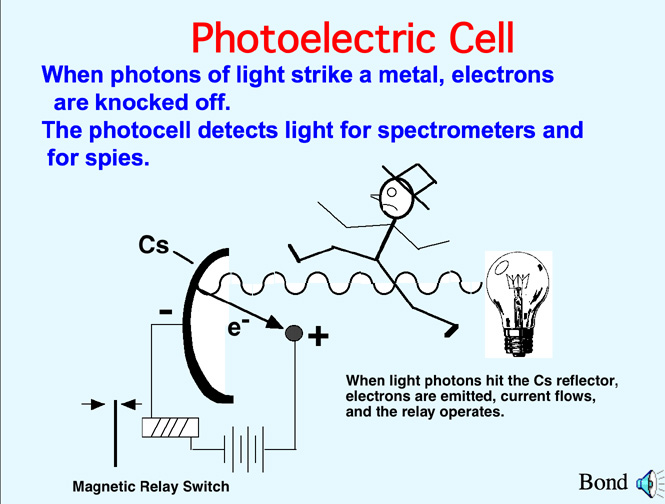The photoelectric effect is the observation that many metals emit electrons when light shines upon them. Electrons emitted in this manner may be called photoelectrons.
According to classical electromagnetic theory, this effect can be attributed to the transfer of energy from the light to an electron in the metal. From this perspective, an alteration in either the amplitude or wavelength of light would induce changes in the rate of emission of electrons from the metal. Furthermore, according to this theory, a sufficiently dim light would be expected to show a lag time between the initial shining of its light and the subsequent emission of an electron. However, the experimental results did not correlate with either of the two predictions made by this theory.
Instead, as it turns out, electrons are only dislodged by the photoelectric effect if light reaches or exceeds a threshold frequency, below which no electrons can be emitted from the metal regardless of the amplitude and temporal length of exposure of light. To make sense of the fact that light can eject electrons even if its intensity is low, Albert Einstein proposed that a beam of light is not a wave propagating through space, but rather a collection of discrete wave packets (photons), each with energy hf. This shed light on Max Planck's previous discovery of the Planck relation (E = hf) linking energy (E) and frequency (f) as arising from quantization of energy. The factor h is known as the Planck constant.
In 1887, Heinrich Hertz discovered that electrodes illuminated with ultraviolet light create electric sparks more easily. In 1905 Albert Einstein published a paper that explained experimental data from the photoelectric effect as being the result of light energy being carried in discrete quantized packets. This discovery led to the quantum revolution. Einstein was awarded the Nobel Prize in 1921 for "his discovery of the law of the photoelectric effect".
The photoelectric effect requires photons with energies from a few electronvolts to over 1 MeV in elements with a high atomic number. Study of the photoelectric effect led to important steps in understanding the quantum nature of light and electrons and influenced the formation of the concept of wave–particle duality. Other phenomena where light affects the movement of electric charges include the photoconductive effect (also known as photoconductivity or photoresistivity), the photovoltaic effect, and the photoelectrochemical effect.

